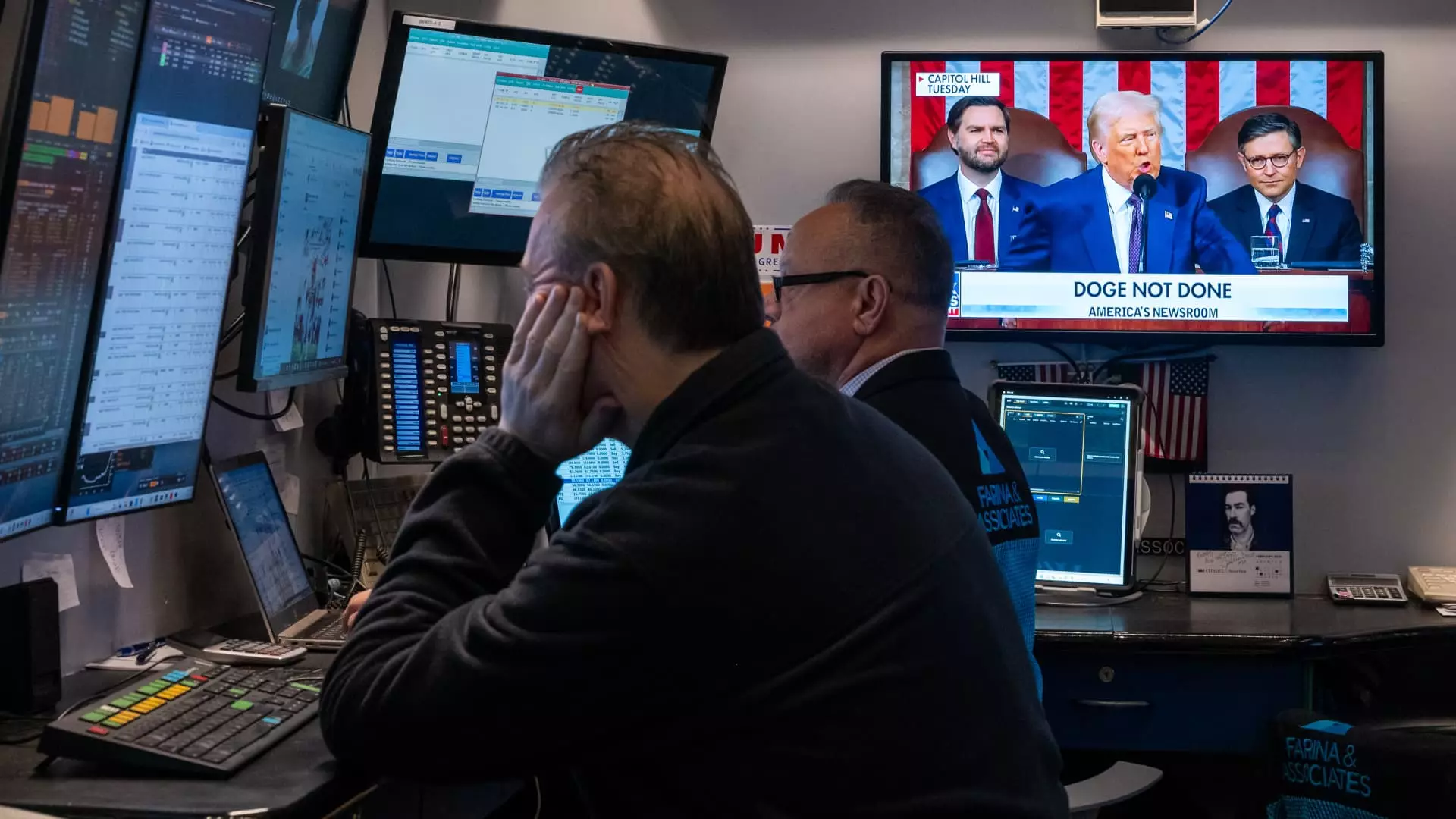The financial landscape is tumultuous, marked by a myriad of uncertainties that lead investors to seek safer harbors for their assets. Goldman Sachs Asset Management recently unveiled the Goldman Sachs U.S. Large Cap Buffer 3 ETF, a product aimed at investors clamoring for downside protection amidst increasing volatility. But with market fluctuations, can these so-called safety nets genuinely shield investors from the unpredictability of a post-pandemic economy?
Bryon Lake, the chief transformation officer at Goldman Sachs, has voiced his perspective, emphasizing the necessity of these financial instruments at times when tariffs, geopolitical turmoil, and equity market disintegration loom large. While his assertion is understandable, a critical analysis of these buffer ETFs may reveal that they offer a mirage of safety rather than the solid ground investors crave.
The Mechanism of Buffer ETFs
These buffer ETFs are engineered to limit downside exposure while promising some upside participation. Specifically, Lake noted that they aim to protect investors from declines in the range of 5% to 15%, allowing for gains between 5% and 7%. This structure raises a dazzling question: does our appetite for limited risk distort sound investment judgment?
In theoretically designing a financial tool that appears perfect for risk-averse investors, buffer ETFs inherently complicate the investment strategy. The defined boundaries of loss and gain can lead many to underestimate the impact of market dynamics or fear paralysis when the market moves unexpectedly outside their expectations.
Certainly, millionaire goals are often set in the realm of lofty returns. By promising a safety net, buffer products might lull investors into a false sense of security, diminishing their ability to react promptly in the dynamic market environment where agility often prevails.
The Track Record Paradox
Lake’s claim that the strategies employed in buffer products are conventional and have served investors well for years hints at a comfort blanket. However, one must wonder if historical performance guarantees future results. With significant upheavals in global finance and rampant economic unpredictability, relying on time-tested strategies in today’s volatile market may not be enough.
Notably, since the launch of the Goldman Sachs U.S. Large Cap Buffer 3 ETF, it has underperformed—down about 3% compared to a nearly 4% dip in the S&P 500. Is this the wake-up call for investors relying on these buffer products for stability? When traditional investments falter, the traditional defense tactics may not replicate past wins.
The Psychology Behind Investing
Ultimately, the buffer ETFs seem to echo our profound tendency to shrink from risk. The instruments play on human psychology; investors naturally recoil at the thought of losses and are drawn to products that promise the taste of safety. But this begs another consideration: in a market rife with oscillating sentiment and economic nuance, is our desire to shield ourselves from risk transforming into an aversion to taking any risk at all?
In the end, if financial instruments like the Goldman Sachs U.S. Large Cap Buffer 3 ETF encourage inertia rather than proactive decision-making, their existence may do more harm than good in the quest for cumulative wealth. Rather than shielding investors from market turmoil, such products could inadvertently relegates them to a cycle of underperformance.


Leave a Reply